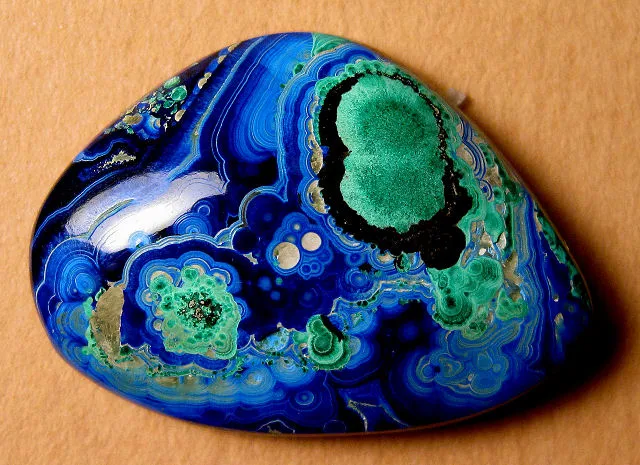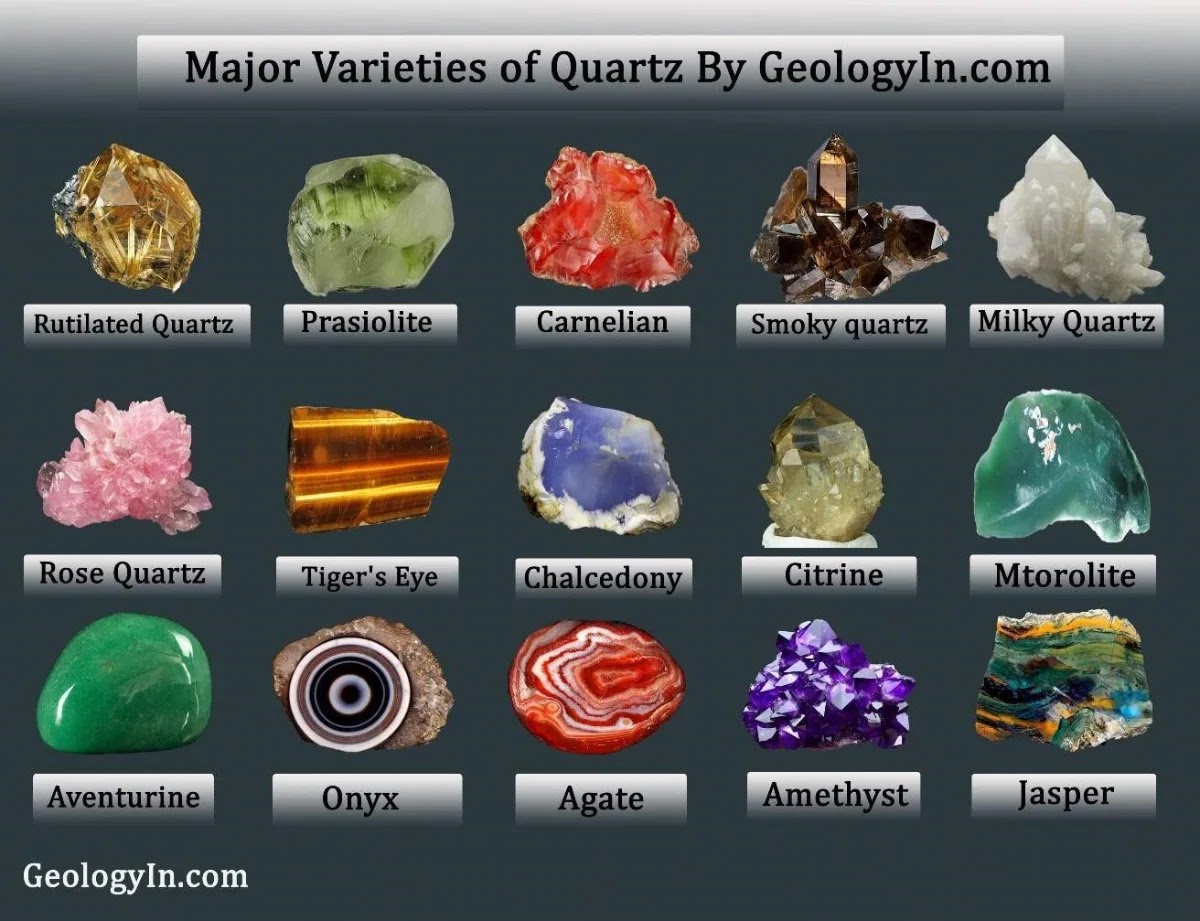Polished Azurite and Malachite
Azurite and malachite are two distinct but closely related minerals, both of which are copper carbonate hydroxides. They are often found together in nature because they form under similar geological conditions, particularly in the oxidized zones of copper deposits. Despite their similarities, they have different chemical compositions, appearances, and uses.
 |
| Fascinating Polished Azurite and Malachite. Photo Credit R.Weller/Cochise College. Gemstones courtesy of Starborn Creations Sedona. Arizona |
Appearance and Characteristics of Azurite and Malachite
Azurite:
- Color: Deep blue to azure blue, often with a striking, vivid hue.
- Luster: Vitreous (glassy) to dull, depending on the specimen.
- Transparency: Transparent to translucent, with some crystals allowing light to pass through.
- Crystal Habit:
- Typically forms as prismatic or tabular crystals.
- Can also occur as massive or earthy aggregates.
- Distinctive Feature:
- Known for its intense blue color, which made it a prized pigment in
- ancient times (referred to as "blue verditer" or "mountain blue").
- Formula: Cu₃(CO₃)₂(OH)₂ (Copper carbonate hydroxide).
- Crystal System: Monoclinic.
- Hardness: 3½ - 4 on the Mohs scale, making it relatively soft.
- Streak: Light blue.
- Occurrence: Commonly found in the oxidized zones of copper-bearing ore deposits.
Malachite:
- Color: Bright green to dark green, often with concentric banding or swirling patterns.
- Luster: Silky to dull, depending on the form.
- Transparency: Opaque, with no light passing through.
- Crystal Habit:
- Rarely forms well-defined crystals.
- More commonly occurs as botryoidal (grape-like), fibrous, or massive aggregates.
- Distinctive Feature: Its banded appearance is one of its most recognizable traits, making it a popular choice for decorative and ornamental purposes.
- Formula: Cu₂CO₃(OH)₂ (Copper carbonate hydroxide).
- Crystal System: Monoclinic.
- Hardness: 3½ - 4 on the Mohs scale, similar to Azurite.
- Streak: Light green.
- Occurrence: A very common secondary copper mineral, often found in the oxidized zones of copper deposits.
Relationship Between Azurite and Malachite
Azurite and malachite are polymorphs, meaning they have the same chemical elements (copper, carbon, oxygen, and hydrogen) but different crystal structures. Their differing structures result in their distinct colors and properties.
In nature, azurite often transforms into malachite over time due to exposure to moisture and carbon dioxide. This process is called "pseudomorphosis," where one mineral replaces another while retaining the original mineral's shape.
They are commonly found together in copper-rich environments, such as in mines in Arizona (USA), Namibia, Australia, and the Democratic Republic of Congo.

%20(1).webp)






